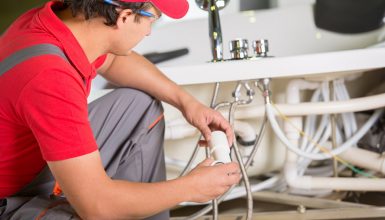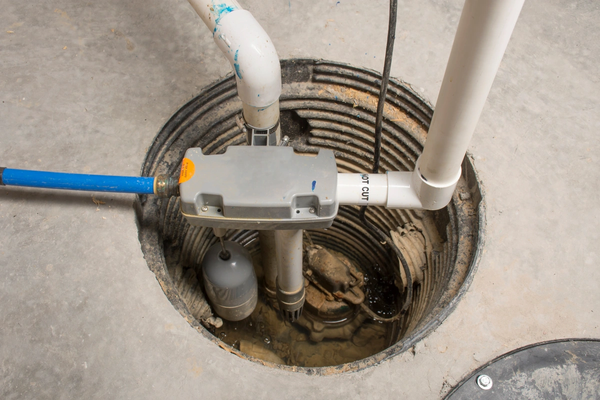Our Manual to Fixing Low Water Pressure in Your Home
Our Manual to Fixing Low Water Pressure in Your Home
Blog Article
They are making several good annotation related to 10 Reasons for Low Water Pressure in Your House in general in the content down the page.

Low water pressure in your house can be a discouraging problem, affecting whatever from showering to washing dishes. If you're experiencing weak water circulation, there are a number of possible causes and solutions to discover. In this guide, we'll discuss usual reasons for low tide stress and practical steps to attend to the concern efficiently.
Intro to Low Water Pressure
Low tide pressure occurs when the flow of water from your taps, showers, and other fixtures is weaker than usual. This can make everyday tasks a lot more challenging and less reliable. Comprehending the reasons for low water stress is vital to finding the best service.
Typical Sources Of Low Tide Stress
Faulty Stress Regulatory Authorities
Pressure regulators are responsible for preserving constant water stress in your house. If they malfunction, it can result in low tide pressure or irregular circulation throughout your house.
Community Water Supply Issues
Sometimes, the problem lies outside your home. Municipal water supply issues, such as main line leakages or maintenance job, can briefly reduce water pressure in your location.
Pipe Obstructions
With time, pipelines can come to be blocked with mineral deposits, sediment, or particles, restricting the circulation of water. This is a common concern in older homes with galvanized steel pipelines.
Deterioration
Corrosion within pipelines can result in leaks and decreased water pressure. Corrosion build-up can restrict water flow, especially in aging plumbing systems.
Exactly How to Detect Low Water Stress
Inspecting Pipes
Examine visible pipes for indicators of leakages, corrosion, or blockages. Take notice of any type of uncommon noises, such as knocking or rattling pipes, which could show issues within the plumbing system.
Consulting with a Plumber
If you're unable to determine the source of low water stress, think about working with a specialist plumber to perform an extensive assessment. They can identify underlying issues and advise suitable options.
Inspecting Faucets and Fixtures
Beginning by testing the water stress at different faucets and components throughout your home. If the concern is separated to specific areas, it might suggest local troubles.
DIY Solutions to Deal With Low Tide Pressure
Flushing Water Heater
Debris buildup in the water heater can limit flow and decrease performance. Flushing the storage tank occasionally helps get rid of sediment and maintain optimal efficiency.
Checking Stress Regulator
Make sure that the stress regulatory authority is working appropriately. Readjusting or changing the regulatory authority can help restore correct water stress throughout your home.
Cleansing Aerators and Showerheads
Natural resources can collect in aerators and showerheads, reducing water circulation. Remove and clean these components frequently to improve water pressure.
Clearing Up Clogs in Water Lines
For small blockages, attempt making use of a plumbing snake or chemical drainpipe cleaner to clear obstructions in pipes. Be cautious when utilizing chemicals and adhere to security standards.
When to Call an Expert Plumber
If do it yourself efforts stop working to solve the issue or if you suspect considerable plumbing issues, it's finest to seek help from a certified plumber. They have the experience and devices to deal with complex problems securely and efficiently.
Preventive Measures to Keep Water Pressure
Mounting a Pressure Booster
Take into consideration mounting a pressure booster pump to improve water stress in areas with consistently reduced circulation. This can be especially advantageous for multi-story homes or homes with high-demand fixtures.
Monitoring Water Usage
Be mindful of water usage routines and prevent ill-using the plumbing system. Basic modifications, such as astonishing showers and laundry loads, can assist maintain ample water pressure.
Normal Upkeep
Arrange regular upkeep for your plumbing system to prevent issues such as corrosion, leakages, and obstructions. Resolving small issues early can aid avoid even more considerable repair work later on.
Final thought
Taking care of low tide pressure can be discouraging, but recognizing the underlying reasons and carrying out proper solutions can restore optimal circulation throughout your home. Whether it's cleaning aerators, evaluating pipelines, or talking to a plumber, taking proactive actions can make sure a consistent supply of water for your daily requirements.
FOUR WAYS TO FIX LOW WATER PRESSURE NOW
Turning on a shower or faucet only to find the water comes out in a sad, slow drizzle is never a good feeling. How exactly are you supposed to wash a pan or take a quick shower when it takes 10 minutes just to rinse off a little soap? The good news is that when your water pressure is bad, there's always a cause: typically one that can be easily fixed. Here are some of the most common causes of low pressure and what you can do to fix the issue:
DEBRIS AND MINERAL DEPOSIT BUILDUPS
If you notice low water pressure from just one or two of the fixtures in your house, the problem likely has to do with debris buildup. Water is full of minerals and other debris, all of which can accumulate in your pipes and on your fixtures. This can cause a blockage that affects how much water flows through. To fix this, try filling a small plastic bag with white vinegar, and use a rubber band to hang it around your showerhead or faucet. Let the head of the fixture soak for a few hours, and the vinegar should loosen the deposits.
WATER LEAKS
Leaks are another common cause of low water pressure. If water is flowing out of your plumbing through a hole or crack before it can reach your fixture, the pressure coming out of the faucet or showerhead will be lower. A plumbing professional is your best bet for finding and repairing a leak in your water supply pipes.
Leaks are another common cause of low water pressure. If water is flowing out of your plumbing through a hole or crack before it can reach your fixture, the pressure coming out of the faucet or showerhead will be lower. A plumbing professional is your best bet for finding and repairing a leak in your water supply pipes.
A VALVE ISSUE
If you have low water pressure throughout your home, check your main shut-off valve to make sure it's completely open. You may also want to see if there's a pressure-reducing valve installed. If there is, have a plumber help you adjust the settings to get the pressure you're looking for.
OTHERS USING WATER
Believe it or not, your low water pressure could be caused by your neighbors. If you notice low pressure at certain times of day, it may be because you and the people living next to you have similar schedules - when everyone is showering at the same time, the pressure will be lower in every home. Low pressure throughout the neighborhood may also be caused by an issue with your municipal water supply. If that's the case, call the supplier to see if they're working on the issue.
https://www.rotorooter.com/blog/water-leaking/low-water-pressure-fixes/

I'm certainly very intrigued by 10 Reasons for Low Water Pressure in Your House and I really hope you liked the entire blog post. Enjoyed reading our post? Please quickly share it. Help other people discover it. Thanks for taking the time to read it.
Book An Appointment Report this page